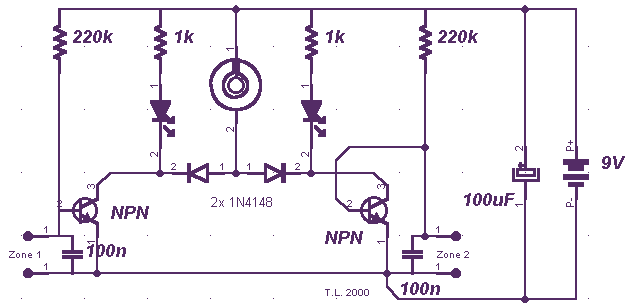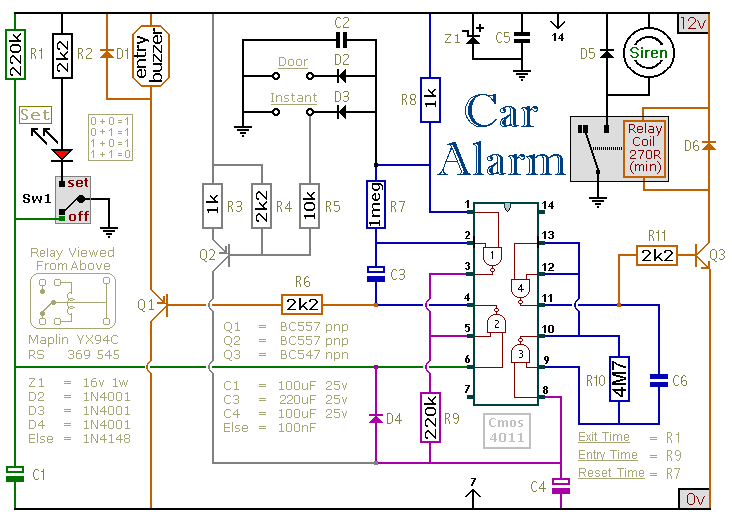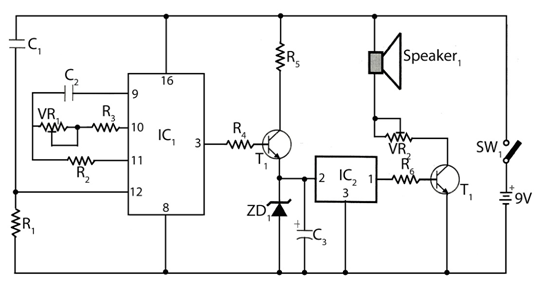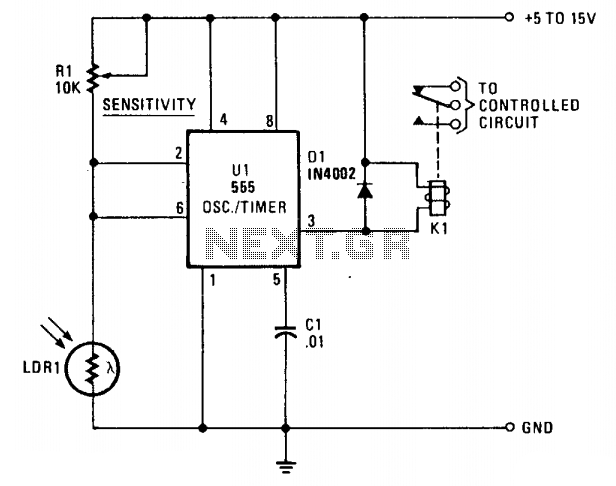
Miniature Loop Alarm

Simple construction, reliable operation, very small power consumption, and, most of all, small size. I started with CMOS logic gates, but was soon forced to abandon the concept after a few unsuccessful (and far too complicated) attempts. Then I suddenly realized that a simple transistor switch might do the job and I was right.
The circuit in question utilizes a simple transistor switch configuration, which is well-suited for applications requiring low power consumption and compact design. The implementation begins with selecting an appropriate transistor, typically a bipolar junction transistor (BJT) or a field-effect transistor (FET), based on the required switching characteristics and load specifications.
In a basic transistor switch circuit, the transistor operates in either the cutoff region (off state) or the saturation region (on state). The input signal is applied to the base (for BJTs) or the gate (for FETs) of the transistor, controlling its conductive state. A resistor is often placed in series with the base or gate to limit the input current, ensuring the transistor operates within safe parameters.
The load is connected to the collector (for BJTs) or the drain (for FETs) of the transistor, and a power supply is connected to the emitter (for BJTs) or the source (for FETs). When the input signal is high, the transistor turns on, allowing current to flow through the load, which can be an LED, motor, or any other device requiring activation. Conversely, when the input signal is low, the transistor turns off, cutting off the current to the load.
The advantages of this configuration include simplicity in construction and a minimal number of components, which contributes to the overall reliability of the circuit. The low power consumption is achieved by ensuring that the transistor remains in cutoff when not actively switching, thus drawing negligible current from the power supply.
For applications where size is a critical factor, surface-mount devices (SMD) can be employed to further reduce the footprint of the circuit. Additionally, careful layout design can minimize parasitic capacitance and inductance, enhancing the performance of the switching action.
In summary, the circuit leverages the switching capabilities of transistors to achieve a reliable and efficient solution for various electronic applications, emphasizing simplicity, low power consumption, and compactness.Simple construction, reliable operation, very small power consumption, and, most of all, small size. I started with CMOS logic gates, but was soon forced to abandon the concept after a few unsuccessful (and far too complicated) attempts. Then I suddenly realized that a simple transistor switch might do the job and I was right. 🔗 External reference
The circuit in question utilizes a simple transistor switch configuration, which is well-suited for applications requiring low power consumption and compact design. The implementation begins with selecting an appropriate transistor, typically a bipolar junction transistor (BJT) or a field-effect transistor (FET), based on the required switching characteristics and load specifications.
In a basic transistor switch circuit, the transistor operates in either the cutoff region (off state) or the saturation region (on state). The input signal is applied to the base (for BJTs) or the gate (for FETs) of the transistor, controlling its conductive state. A resistor is often placed in series with the base or gate to limit the input current, ensuring the transistor operates within safe parameters.
The load is connected to the collector (for BJTs) or the drain (for FETs) of the transistor, and a power supply is connected to the emitter (for BJTs) or the source (for FETs). When the input signal is high, the transistor turns on, allowing current to flow through the load, which can be an LED, motor, or any other device requiring activation. Conversely, when the input signal is low, the transistor turns off, cutting off the current to the load.
The advantages of this configuration include simplicity in construction and a minimal number of components, which contributes to the overall reliability of the circuit. The low power consumption is achieved by ensuring that the transistor remains in cutoff when not actively switching, thus drawing negligible current from the power supply.
For applications where size is a critical factor, surface-mount devices (SMD) can be employed to further reduce the footprint of the circuit. Additionally, careful layout design can minimize parasitic capacitance and inductance, enhancing the performance of the switching action.
In summary, the circuit leverages the switching capabilities of transistors to achieve a reliable and efficient solution for various electronic applications, emphasizing simplicity, low power consumption, and compactness.Simple construction, reliable operation, very small power consumption, and, most of all, small size. I started with CMOS logic gates, but was soon forced to abandon the concept after a few unsuccessful (and far too complicated) attempts. Then I suddenly realized that a simple transistor switch might do the job and I was right. 🔗 External reference





